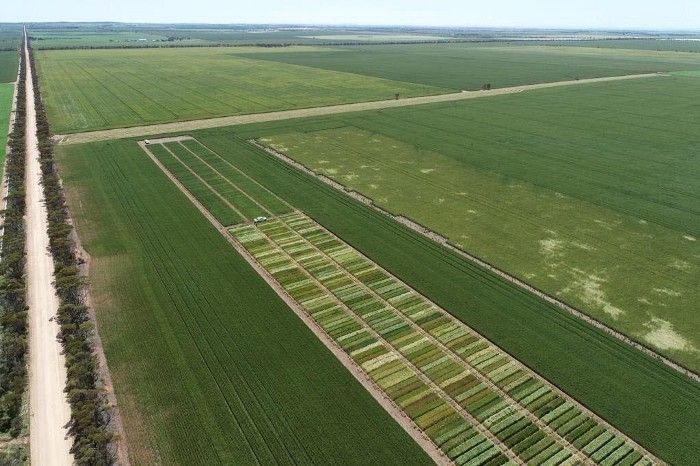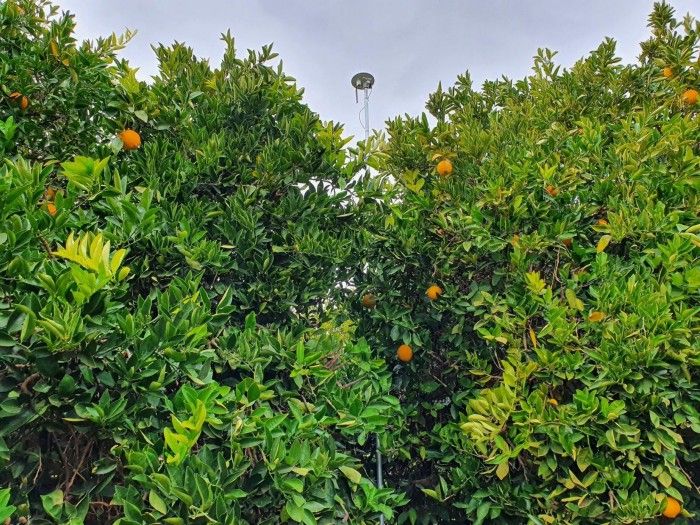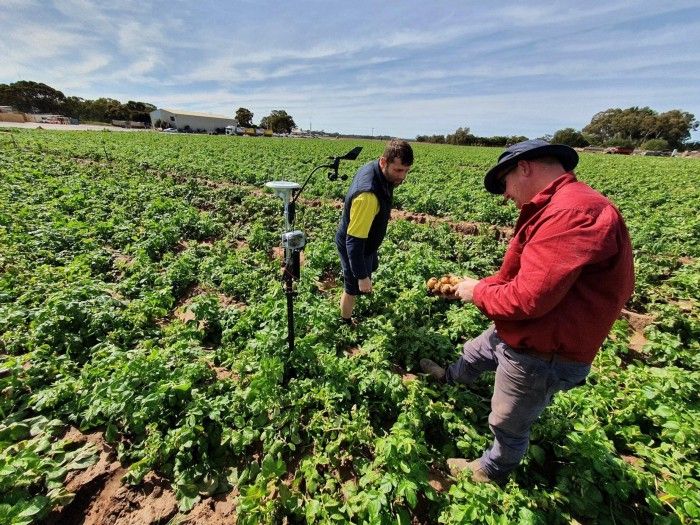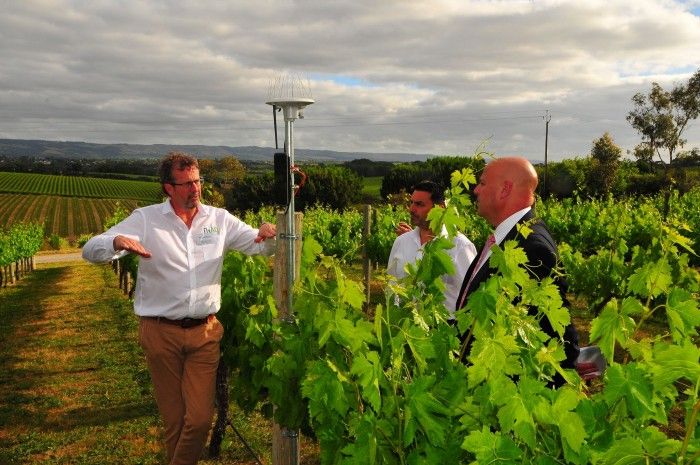How to Feed a Continent with Less Water and More Data
D3Ag’s Brentwood barley field trial, SA Australia.
This week, Arable and D3Ag are proud to launch a partnership that supports Australian growers and land stewards in using data to navigate the agricultural challenges unique to the region, and together forge a better way to manage water resources on the continent. The teams have been working together for several years to build a solution that brings tangible value to water- and resource-strapped communities who feed a growing population under an increasingly difficult set of circumstances.
Known for their resourcefulness, innovation, and evidence-based approach to improving productivity and resource use efficiency, Australian farmers are a foundational pillar of the country’s economy. Their embrace of scientific developments in higher yielding, drought- and disease-tolerant crop varieties helps to make an island of 25 million people more self-reliant and less dependent on foreign imports to meet its own needs.
Yet more than 40 years of persistent drought in Southeastern Australia, exacerbated by the recent uptick in seasonal wildfires that tear through the landscape and encircle the globe with particulate matter for months afterward, have added considerable pressure to Australian farmers to manage water efficiently while still meeting national and global demand for sustainably grown products. Climatic model simulations project that high-value Australian growing regions demonstrate a potential decline in water supply by nearly 20% over the next 70 years, and up to 32% decline at extreme times during the year. Meanwhile, the Australian population is expected to almost double by 2056, primarily in urban centers where 90% of the population currently lives, disconnected from the Australian agricultural landscape and the commodities it provides.
This convergence of tensions — replicated in other climate-sensitive regions of the world, but in hyper focus in Australia — demands out-of-the-box solutions to national resource management. One such solution, the Murray Darling Basin (MDB) water market system, is arguably the most sophisticated water market in the world. Initiated in 2012, the water market system intended to more fully recognize the value of water resources within the MDB while allowing farmers greater flexibility to deal with shifting climate scenarios in the future. It is one of the only water markets not tied to landholder rights — meaning that anyone can speculate on the value of the water in the system, including foreign investors.
The Arable Mark 2 at a demonstration site in citrus, Loxton Research Centre.
The ability to sell water rights has serious negative repercussions in rural communities; the initial draft of the plan failed to account for the fact that not using water, or setting aside water allocations for agriculture, would lead to a lack of crop production. This 1:1 quantification omitted all the ancillary business ventures supporting the agricultural system, laying conditions for a new economic drought in the region. Eight years later, the outcomes of the system design remain highly contested between crop transition plans, quantifying baselines, and returns to flow and investments in more efficient irrigation infrastructure.
Even though it can be head-spinning at times, Australia’s novel approach to water management aims to address a complex problem to which there is no easy answer. The MDB water market system has jump-started a dialogue about the value of water, real costs of producing food and the meaning of land use in a sustainable production system. For example, Australian cotton growers are under intense scrutiny from all sides — to reduce water usage, but also deliver a high-yielding, high value crop. This challenge forces growers to think beyond total acre-inches in terms of water applied, and into timing each inch and every application to maximize yield and quality outcomes. Developing baseline flows and annual water quantification is a challenging process for a number of reasons — identifying a sustainable target, methods of measurement, verification authorities, and feedback loops in the water cycle associated with macro-scale climatic systems. Having microclimate-specific infield data is the key to being able to measure these cycles and understand how to manage resource usage through them.
Trials in the US have demonstrated how ‘right-timing’ an application of water during critical growth stages can lead to significant yield differences for people growing in water-limited regions. The impacts of right-timing inputs are amplified when accounting for fertilization and crop protection strategies as well. Implementing these strategies demands a nuanced understanding of crop growth drivers — precise heat unit accumulation, daily light integral, humidity and precipitation to understand exactly when and how much water is needed at each stage. Arable & D3Ag are bringing this technology to Australia, and not a moment too soon.
In a potato field, courtesy D3Ag.
Early in the companies’ relationship, D3Ag founder Richard Porter drilled down on many of the nuances around Australian water markets, and specifically those of the MDB. Arable’s VP of Strategic Partnerships Jess Bollinger connected with him over the deep challenges faced by growers across the continent and how Australian farmers have a long history of embracing technology in meeting those challenges. “I have witnessed, and participated in, the evolution of farming technology and methodology in the challenging and dynamic environments presented across southern Australia over the past 30 years, and the rate of technological advancement now is just so rapid and invigorating — it’s truly a great time to be involved in agriculture.” Australians are keenly sensitive to asserting sovereignty of their food system in the face of foreign investment, and D3Ag’s mission of providing them the practical tools to do so dovetailed with Arable’s approach to data-driven decision management.
Arable’s infield environmental and agronomic measurements help growers to understand and evaluate what types of inputs and management strategies work best for different crops, under variable microclimate stressors. In an industry where resource use efficiency is so critical to economic and environmental sustainability, this insight is key to identifying the right tools needed to meet the precise water needs for different plant types, without wasting a drop. The idea is that, beyond contributing to regulatory compliance and environmental stewardship, having these tools can boost rural economic activity and prove to the nation how the agricultural sector is playing its part in the global pursuit for economic, environmental, and political sustainability.
“On that first trip, I spent two weeks touring Australia with Richard, visiting so many different farms, from vineyards around Adelaide to orange groves and almond and walnut orchards, to wheat fields in the outback,” recalled Jess. “He really took the time to show us how everything worked and to introduce me to the people who make the region the jewel that it is. Our synergy felt very natural, and the project was something we were both super excited about working on together, and for that I’m so grateful. Everything about working with their team has been really important to successfully launching Arable in Australia.”
From left, D3Ag’s Richard Porter & David Maggiori with Minister for Primary Industries and Regional Development of South Australia David Basham at the recent Arable launch, Beach Road Wines, McLaren Vale.
Australian farmers are hungry for technology that helps them figure out how to conserve water while maximizing yield and quality. For them, it is the clearest way to survive on a tight margin in an increasingly volatile water market. D3Ag’s work with Arable’s technology is instrumental in supporting livelihoods, invigorating regional economies, preserving natural resources, and supporting a nation’s food sovereignty for generations to come.



